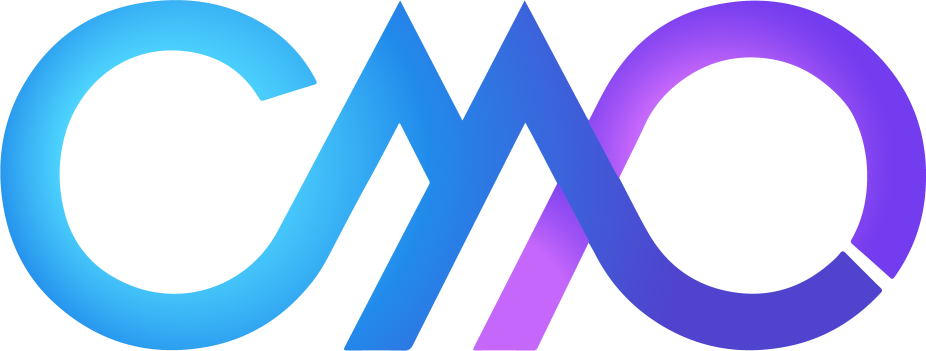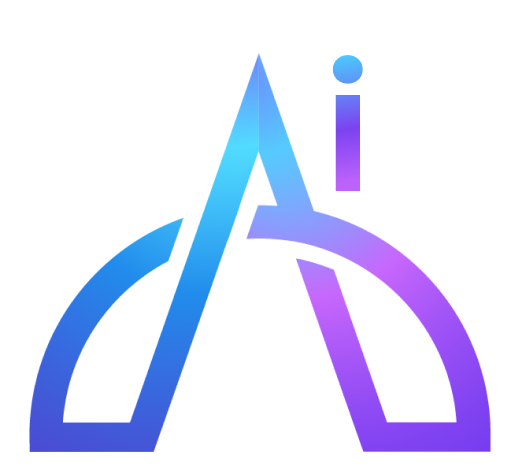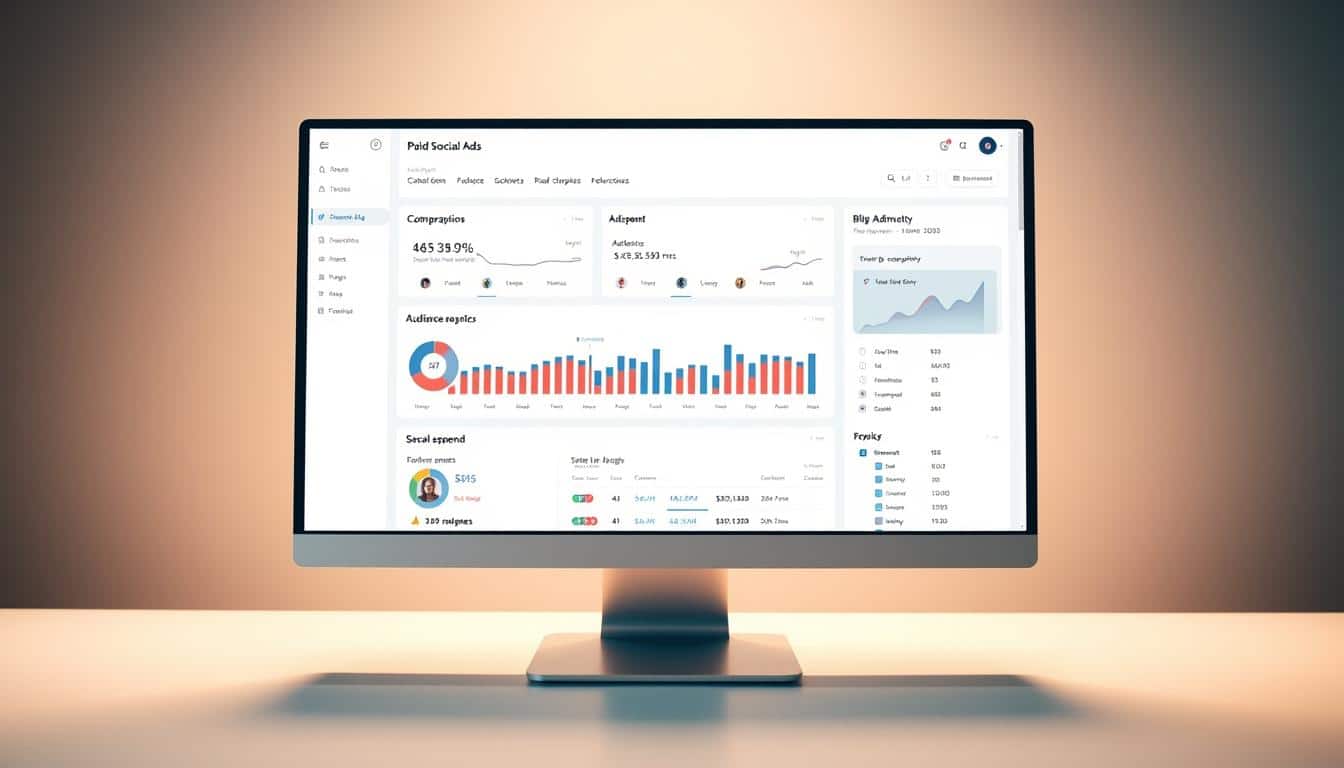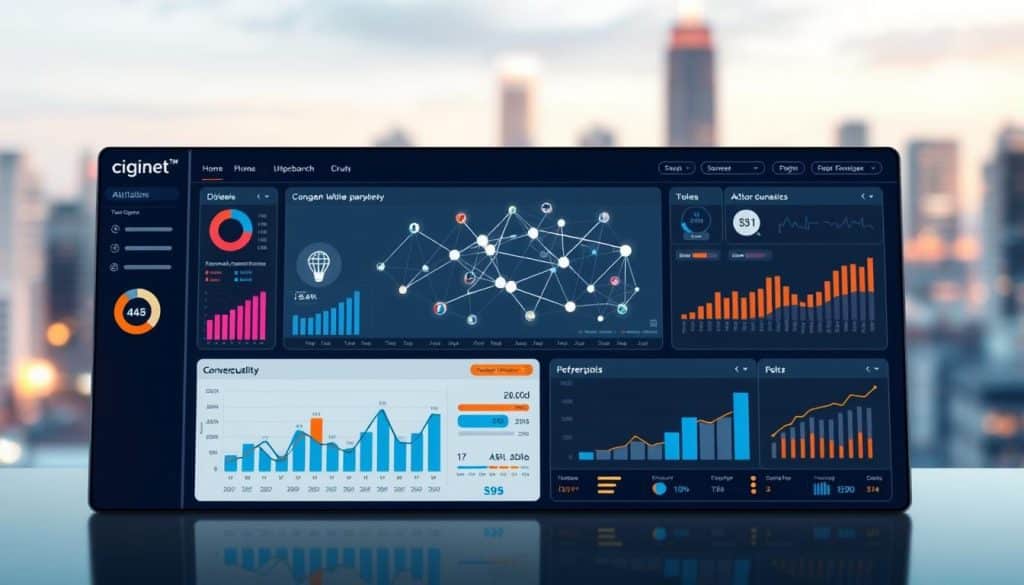Imagine spending just $7 on ads and making $127,492 in revenue. This is real, not just a dream. We’ve helped Canadian businesses do this with smart paid social media ads. They get an average return of $12 for every $1 spent on these platforms.
Digital marketing has changed a lot. What was once new is now key. Knowing how to use these changes can make or break a business.
In this guide, we’ll share how to get real results. It doesn’t matter if you spend $500 or $50,000 a month. The key is smart targeting, great creative, and always improving.
We mix data with creativity to get results. We turn strangers into loyal customers on Facebook, Instagram, and TikTok. By the end of this, you’ll know how to run successful campaigns that really pay off for your business.
Key Takeaways
- Strategic paid social ads can deliver returns of $12 for every $1 invested
- Success requires combining precise targeting with compelling creative content
- Facebook, Instagram, and TikTok each offer unique advantages for different business goals
- Continuous optimization is essential for maximizing campaign performance
- PPC social campaigns work effectively at any budget level when properly structured
- Data-driven decision-making separates profitable campaigns from wasted spending
The Current State of Paid Social Advertising in Canada
Canadian businesses are now making smart choices with their paid social ads. Gone are the days of just guessing. Today, they invest wisely, thanks to a more advanced digital world.
Marketers in Canada are spending 25-35% of their digital budgets on social ads. This shows how effective these platforms are. With more competition, ads cost more but are more precise.
The main reasons for this investment are clear:
- Increased traffic: Bringing in the right visitors to websites
- Enhanced exposure: Showing brands to more people
- Quality lead generation: Turning viewers into customers
- Direct conversion tracking: Seeing how ads lead to sales
Paid social ads offer something special. They let us measure their success in real-time. This makes marketing a valuable investment, not just an expense.
Canada’s market has its own rules. Quebec’s bilingual needs and high mobile use are just a few examples. These factors shape how ads perform.
Using ads on multiple platforms is key. Campaigns on Facebook, Instagram, and TikTok work better together. This approach boosts reach and keeps the brand’s message consistent.
How Canadians interact with ads has changed. They like ads that feel made for them, not forced. Ads that offer real value do well.
Today’s ad budgeting is more complex. It uses smart algorithms to spend wisely. This means less manual work and more focus on strategy.
It’s not just about spending the most money. Success comes from smart planning, creativity, and always improving. These are the traits of top performers.
By understanding these trends, Canadian businesses can thrive. Paid social ads reward those who think strategically, create well, and keep improving.
Proven Paid Social Media Ads Strategies by Platform
Success in paid social advertising needs more than just generic campaigns. It requires strategies tailored to each platform’s unique audience. We’ve developed targeted approaches for Facebook, Instagram, and TikTok, accounting for their algorithms, user behaviors, and ad formats. These strategies deliver measurable results for Canadian businesses across various industries.
Each platform has its strengths and opportunities. Meta platforms offer access to over 3 billion active users worldwide with advanced ad targeting. TikTok connects brands with young, engaged audiences through authentic, short-form video content. The key is to match your creative approach to each platform’s expectations while keeping your brand message consistent.
Understanding these nuances can turn good campaigns into great ones. From Facebook ads using advanced audience segmentation to Instagram ads with visual storytelling, each strategy must align with how users interact on that platform. Let’s explore the specific tactics that drive higher conversions and engagement across each network.
Facebook Ads: Leveraging Advanced Targeting for Higher Conversions
Facebook is a powerhouse for advertisers seeking precise audience targeting and strong conversion rates. The platform’s sophisticated data infrastructure enables businesses to reach exactly the right people at the right time. By implementing Facebook advertising strategies that leverage Meta’s advanced tools, we help clients achieve significantly better ROI than generic broadcast approaches.
The platform’s strength lies in its ability to connect businesses with users based on detailed demographic, behavioral, and interest data. This precision allows for highly personalized messaging that resonates with specific audience segments. When executed correctly, these campaigns can reduce customer acquisition costs while simultaneously increasing conversion quality.
Audience Segmentation and Custom Audiences
Custom Audiences represent one of the most powerful features within Facebook’s advertising ecosystem. This tool allows businesses to upload customer lists, website visitor data, or app user information to create highly targeted campaigns. We regularly achieve 40-60% lower cost-per-acquisition rates using Custom Audiences compared to cold traffic campaigns.
Building effective audience segments requires strategic thinking about your customer journey. Consider these essential Custom Audience types:
- Website Visitor Audiences: Target users who visited specific pages or took particular actions on your site
- Customer List Audiences: Upload email lists or phone numbers to reach existing customers with retention campaigns
- Engagement Audiences: Retarget people who interacted with your Facebook or Instagram content
- Lookalike Audiences: Reach new prospects who share characteristics with your best customers
Ad targeting becomes exponentially more effective when you layer multiple criteria. For instance, combining geographic targeting with interest-based filters and demographic parameters creates highly refined audience segments. This precision ensures your budget reaches people most likely to convert, maximizing every advertising dollar.
Conversion API and Pixel Optimization
The Facebook Pixel and Conversion API work together to track user actions and optimize campaign performance. These tools provide the data foundation that enables Facebook’s algorithm to improve delivery over time. Proper implementation of these tracking mechanisms is non-negotiable for serious advertisers.
The Conversion API offers particular advantages in today’s privacy-focused environment. By sending conversion data directly from your server to Facebook, it bypasses browser limitations and provides more reliable tracking. This server-side approach captures conversion events that browser-based pixels might miss due to ad blockers or cookie restrictions.
Optimization requires ongoing attention to conversion event setup and data quality. We recommend tracking multiple conversion events—from page views and add-to-cart actions to purchases and lead submissions. This granular data allows Facebook’s machine learning to identify patterns and optimize delivery for your specific business objectives.
Instagram Ads: Visual Content That Drives Engagement
Instagram’s visual-first platform demands creative excellence and authentic storytelling. The network has evolved beyond simple photo sharing into a complete commerce and content discovery platform. Instagram ads succeed when they blend seamlessly into users’ feeds while capturing attention with compelling visuals and clear value propositions.
The platform’s audience skews younger and more engaged than Facebook, with users spending significant time exploring content and discovering new brands. This creates unique opportunities for businesses that invest in high-quality creative assets and understand the platform’s aesthetic expectations. Instagram ad campaigns perform best when they feel native to the platform, unlike traditional advertisements.
Reels and Stories Ad Formats
Instagram Reels and Stories represent the fastest-growing ad formats on the platform. These full-screen, immersive experiences command user attention in ways that feed-based ads cannot. We’ve observed engagement rates 3-4 times higher with Stories and Reels ads compared to traditional feed placements for many clients.
Reels ads excel at brand storytelling and product demonstrations. The vertical video format feels native to mobile viewing habits, and the algorithm actively promotes engaging Reels content. Successful Reels ads typically feature fast-paced editing, trending audio, and authentic brand personalities.
Stories ads offer advantages for time-sensitive promotions and direct response campaigns. The sequential nature of Stories creates natural narrative flow, while interactive elements like polls, questions, and swipe-up links drive immediate action. These ephemeral ads benefit from urgency psychology—users know the content is temporary, which encourages faster decision-making.
Shopping and Product Tag Integration
Instagram’s shopping features transform the platform into a complete commerce ecosystem. Product tags allow users to discover, browse, and purchase without leaving the app. This seamless experience significantly reduces friction in the customer journey, often resulting in higher conversion rates compared to traffic-based campaigns.
Setting up Instagram Shopping requires connecting your product catalog and ensuring proper tagging across posts and ads. Once implemented, shoppable Instagram ads enable users to tap products directly within images or videos to view prices and descriptions. This immediate access to product information captures purchase intent at the moment of interest.
The integration works well for e-commerce businesses and consumer products. Lifestyle imagery that naturally incorporates products performs better than obvious product shots. Consider how your products fit into your audience’s aspirational lifestyle, then create content that reflects those scenarios authentically.
TikTok Ads: Reaching Younger Demographics with Authentic Content
TikTok has emerged as the platform of choice for reaching Gen Z and younger Millennials with authentic, entertaining content. The platform’s algorithm prioritizes engaging content regardless of follower count, giving businesses unprecedented organic reach opportunities alongside paid promotion. TikTok ads succeed when they embrace the platform’s casual, creative culture, unlike traditional advertising approaches.
With over 1 billion active users, TikTok provides access to highly engaged audiences who actively participate in trends and challenges. The platform’s unique characteristics demand different creative strategies than Facebook or Instagram. Content that feels native to TikTok—raw, humorous, trend-aware—outperforms polished, corporate-style advertisements by significant margins.
Spark Ads and Creator Partnerships
Spark Ads represent TikTok’s most powerful native advertising format. This feature allows brands to boost organic posts—either their own or creator content—as paid advertisements. The approach maintains authenticity while extending reach beyond organic audiences, combining the best aspects of influencer marketing and paid media.
Partnering with TikTok creators adds credibility and cultural relevance to brand messages. Creators understand platform trends, audience preferences, and content styles that resonate. We’ve seen conversion rates increase by 50-70% when using creator-generated content compared to brand-produced ads. The key is selecting creators whose audiences align with your target demographics and whose authentic voice complements your brand.
Creator partnerships work best when brands provide creative freedom within broad guidelines. Overly scripted content feels inauthentic and performs poorly. Instead, brief creators on key messages and product benefits, then trust their expertise in translating those points into platform-appropriate content.
Algorithm-Friendly Ad Creative
TikTok’s algorithm rewards content that keeps users engaged and encourages interaction. Creating algorithm-friendly TikTok ads requires understanding the platform’s content preferences and ranking factors. Videos that generate high completion rates, comments, shares, and likes receive broader distribution, whether organic or paid.
Effective TikTok ad creative typically incorporates these elements:
- Hook within 3 seconds: Capture attention immediately with surprising visuals or statements
- Native format: Vertical video that looks like user-generated content, not polished ads
- Trending audio: Leverage popular sounds and music that users recognize
- Clear call-to-action: Direct viewers with phrases like “Shop Now” or “Learn More”
- Authentic delivery: Real people and genuine reactions outperform actors and scripts
Length matters on TikTok—videos between 21-34 seconds typically perform best for paid ads. This duration provides enough time to deliver your message while maintaining viewer attention through completion. The algorithm interprets high completion rates as signals of quality content worthy of broader distribution.
While TikTok dominates short-form video, don’t overlook opportunities on other platforms. LinkedIn sponsored content excels for B2B lead generation and thought leadership campaigns, ideal for professional services and enterprise solutions. Twitter promoted posts work well for real-time engagement around trending topics and timely announcements. The most successful paid social strategies match platform strengths to specific business objectives, avoiding equal budget distribution across all channels.
Campaign Optimization and ROI Measurement Techniques
Optimizing campaigns needs a smart plan. This includes targeting the right people, using your budget wisely, and tracking how well things work. By testing and adjusting based on data, you can make your ads more effective.
Optimizing campaigns is an ongoing process. It involves always checking your ads, trying new things, and moving money to what works best. By focusing on the right strategies, you can make your social ads a reliable way to make money.
Smart Ad Targeting and Lookalike Audience Strategies
Starting with the right audience is key to your ad success. We use your current customers to find new ones. Lookalike audiences are a powerful tool for finding new customers who are similar to your best ones.
Facebook and Instagram let you create lookalike audiences from different sources. Your email list is the strongest base. You can also use website visitors, video watchers, and social media engagers.
The secret to good targeting is to use many targeting options but not too many. Mix demographic filters with interests and behaviors. For example, targeting women aged 25-45 who like sustainable fashion and have bought online recently is a good strategy.
Segmenting your audience helps you tailor your messages. We divide audiences into:
- Cold audiences: People who have never interacted with your brand
- Warm audiences: Website visitors, social media engagers, and content consumers
- Hot audiences: Cart abandoners, previous customers, and high-intent prospects
Each group needs different messages and offers. Cold audiences need to get to know your brand, while hot audiences want direct offers and a sense of urgency.
Cross-Channel Budget Allocation and Testing
Spreading your budget across platforms can make your ads more effective. We allocate based on how well each platform performs. Starting small helps you see which platforms work best before investing more.
A/B testing is key to improving your ads. We test different things to see what works best. This includes ad copy, visuals, calls to action, audience segments, and where to place ads.
When testing, change only one thing at a time. Run each test for 3-7 days to get enough data. Make sure your sample size is big enough to show real differences.
Scaling your budget should be careful. Increase spending by 20-30% every few days. Sudden increases can mess with Facebook’s algorithm and lower your ad performance.
Working across channels keeps your message consistent. We track how different platforms help you make sales. Facebook might get you noticed, Instagram might get you engaged, and retargeting might close the deal.
Essential Metrics for Measuring Social Media ROI
Knowing which metrics matter is key. We focus on ones that show how your ads make money. Likes and followers are nice, but conversions and revenue are what count.
Click-Through Rate (CTR) shows how well your ad grabs attention. A good CTR means your ad is resonating with your audience. In Canada, CTRs usually range from 1-3%, depending on the industry and campaign.
Conversion Rate shows how many people take action after clicking your ad. This tells you if your landing page and offer match what your ad promises. We aim for conversion rates above 2-3% for e-commerce and 5-10% for lead generation.
Cost-Per-Click (CPC) and Cost-Per-Acquisition (CPA) help you manage your budget. CPC shows how much you pay for each click, and CPA shows the cost to get a customer or lead. Lowering these costs while keeping quality high improves your campaign’s profit.
| Metric | Definition | Canadian Benchmark | Optimization Goal |
|---|---|---|---|
| Click-Through Rate (CTR) | Percentage of people who click your ad after seeing it | 1.5-3.0% | Improve ad relevance and creative appeal |
| Conversion Rate | Percentage of clicks that result in desired actions | 2-5% | Enhance landing page experience and offer clarity |
| Cost-Per-Click (CPC) | Average amount paid for each ad click | $0.50-$2.00 | Refine targeting and improve ad quality scores |
| Cost-Per-Acquisition (CPA) | Total cost to acquire one customer or lead | $15-$75 | Increase conversion rates while managing CPC |
| Return on Ad Spend (ROAS) | Revenue generated per dollar spent on advertising | 3:1 to 5:1 | Maximize revenue while scaling profitable campaigns |
Return on Ad Spend (ROAS) is the ultimate measure of profit. It shows how much money you make for every dollar spent on ads. We aim for a 3:1 ROAS, with 4:1 to 5:1 being very good. The best campaigns can reach 6:1 or more.
Setting Cost-Per-Lead (CPL) targets helps keep lead generation affordable. Calculate your max CPL based on how many leads become customers and how much they’re worth. For example, if 20% of leads become customers worth $500 each, you can spend up to $100 per lead.
Retargeting strategies help you win back lost opportunities. We use cart abandonment campaigns to remind shoppers about items left behind. We also use content-based retargeting to keep your brand in mind.
Time-sensitive retargeting creates a sense of urgency. It offers limited-time deals to people who recently interacted with your brand. These campaigns usually have 2-3x higher conversion rates than ads to cold audiences.
Dynamic retargeting shows users the exact products they viewed on your site. This works great for e-commerce sites with lots of products. It makes it clear which products might interest each person.
Conclusion
Paid social ads can really help your business grow if you plan well and keep improving. In Canada, you can use big platforms like Facebook, Instagram, and TikTok. These sites reach millions of people every day.
To start, you need to know what you want to achieve. Pick the right platforms where your customers are most active. Make sure your ads are interesting and valuable, not just about selling.
Successful brands in social media ads do a few things right. They try new things, check their results closely, and always look for ways to get better. They know that making more money means having a good plan and doing things well.
Next, work on making your ads more specific, your content better, and your tracking systems strong. Start small, learn fast, and grow what works.
We help Canadian businesses turn their ads into steady money. Our method uses our knowledge and the special features of each platform to make ads that work well.
The chance to grow with paid social ads keeps getting bigger. The tools are there, people are ready to see ads, and the possibilities are huge. How well you use data will decide if you succeed in this fast-changing world.
Want to make your social media ads better? We’re here to help you every step of the way. We’ll show you how to make campaigns that really help your business grow.
FAQ
What budget should I start with for paid social media ads?
Start with 0-
FAQ
What budget should I start with for paid social media ads?
Start with $500-$1,000 monthly to test different ads. This lets you run ads on one or two platforms. It also helps the algorithms optimize your ads.
FAQ
What budget should I start with for paid social media ads?
Start with 0-Canadian businesses see better results with consistent spending. If trying TikTok ads, spend $300-$500 to evaluate properly. Remember, it’s not just the total amount but how you spend it.,000 monthly to test different ads. This lets you run ads on one or two platforms. It also helps the algorithms optimize your ads.
How do Facebook advertising strategies differ from Instagram ad campaigns?
FAQ
What budget should I start with for paid social media ads?
Start with 0-Facebook ads are great for detailed targeting, ideal for B2B campaigns. Instagram ads focus on visual storytelling, perfect for fashion and travel.,000 monthly to test different ads. This lets you run ads on one or two platforms. It also helps the algorithms optimize your ads.
FAQ
What budget should I start with for paid social media ads?
Start with 0-We use Facebook for conversion-focused campaigns. Instagram is better for building brand awareness with visually appealing content. Choose the right platform for your message.,000 monthly to test different ads. This lets you run ads on one or two platforms. It also helps the algorithms optimize your ads.
What makes TikTok ads effective for business growth?
FAQ
What budget should I start with for paid social media ads?
Start with 0-TikTok ads blend well with organic content, creating authentic ads. They work well with unpolished content that educates or entertains.,000 monthly to test different ads. This lets you run ads on one or two platforms. It also helps the algorithms optimize your ads.
FAQ
What budget should I start with for paid social media ads?
Start with 0-The platform’s algorithm is very good at finding the right audience. Canadian businesses find it great for reaching younger audiences. It’s also cost-effective for businesses willing to adapt.,000 monthly to test different ads. This lets you run ads on one or two platforms. It also helps the algorithms optimize your ads.
How do I measure social media ROI accurately?
FAQ
What budget should I start with for paid social media ads?
Start with 0-We track ROI through multiple layers, including conversions and brand impact. Use platform pixels and event setup to capture key actions.,000 monthly to test different ads. This lets you run ads on one or two platforms. It also helps the algorithms optimize your ads.
FAQ
What budget should I start with for paid social media ads?
Start with 0-Calculate your cost per acquisition and compare it to customer lifetime value. Track ROAS to see revenue generated per ad dollar. Combine platform analytics with CRM data for a full customer journey view.,000 monthly to test different ads. This lets you run ads on one or two platforms. It also helps the algorithms optimize your ads.
What is targeted audience marketing and how does it improve campaign performance?
FAQ
What budget should I start with for paid social media ads?
Start with 0-Targeted audience marketing delivers specific messages to defined groups. It’s about creating customized campaigns for different segments.,000 monthly to test different ads. This lets you run ads on one or two platforms. It also helps the algorithms optimize your ads.
FAQ
What budget should I start with for paid social media ads?
Start with 0-This approach improves performance by resonating with each group’s needs. We see 40-60% better conversion rates with segmented campaigns. Use platform data and customer insights to build genuine buying opportunities.,000 monthly to test different ads. This lets you run ads on one or two platforms. It also helps the algorithms optimize your ads.
Should I run paid social ads on all platforms simultaneously?
FAQ
What budget should I start with for paid social media ads?
Start with 0-Start by identifying where your ideal customers spend their time. Begin with Facebook or Instagram for their mature targeting and diverse audiences.,000 monthly to test different ads. This lets you run ads on one or two platforms. It also helps the algorithms optimize your ads.
FAQ
What budget should I start with for paid social media ads?
Start with 0-Expand to more channels once you’ve established profitable campaigns. Coordinate messaging across platforms while adapting creative formats. Running ads on multiple platforms works with enough budget and creative resources.,000 monthly to test different ads. This lets you run ads on one or two platforms. It also helps the algorithms optimize your ads.
How does LinkedIn sponsored content compare to other social platform options?
FAQ
What budget should I start with for paid social media ads?
Start with 0-LinkedIn excels for B2B marketing and reaching decision-makers. While it costs more per click, the quality of leads justifies the premium for B2B businesses.,000 monthly to test different ads. This lets you run ads on one or two platforms. It also helps the algorithms optimize your ads.
FAQ
What budget should I start with for paid social media ads?
Start with 0-We use LinkedIn for content marketing, promoting whitepapers and webinars. For B2C businesses or limited budgets, prioritize Facebook, Instagram, or TikTok for better ROI and reach.,000 monthly to test different ads. This lets you run ads on one or two platforms. It also helps the algorithms optimize your ads.
What are the most important elements of campaign optimization?
FAQ
What budget should I start with for paid social media ads?
Start with 0-Focus on creative performance, audience targeting, and budget allocation. Test multiple ad variations to find what works best.,000 monthly to test different ads. This lets you run ads on one or two platforms. It also helps the algorithms optimize your ads.
FAQ
What budget should I start with for paid social media ads?
Start with 0-Analyze which targeting parameters deliver the lowest cost per conversion. Shift spend to top-performing ad sets while maintaining enough distribution. Review campaign performance weekly and make adjustments based on metrics.,000 monthly to test different ads. This lets you run ads on one or two platforms. It also helps the algorithms optimize your ads.
How do I create effective lookalike audiences?
FAQ
What budget should I start with for paid social media ads?
Start with 0-Start with high-quality source audiences of your most valuable customers. Use a seed audience of at least 100-1,000 people who’ve taken your desired action.,000 monthly to test different ads. This lets you run ads on one or two platforms. It also helps the algorithms optimize your ads.
FAQ
What budget should I start with for paid social media ads?
Start with 0-The platform then finds similar people. Create 1-3% lookalike audiences, starting with the most precise match. Refresh your source audiences quarterly to keep lookalikes current.,000 monthly to test different ads. This lets you run ads on one or two platforms. It also helps the algorithms optimize your ads.
What role do Twitter promoted posts play in a social media strategy?
FAQ
What budget should I start with for paid social media ads?
Start with 0-Twitter promoted posts are great for real-time marketing and reaching news and trending conversations. It’s best for B2B tech companies and media organizations.,000 monthly to test different ads. This lets you run ads on one or two platforms. It also helps the algorithms optimize your ads.
FAQ
What budget should I start with for paid social media ads?
Start with 0-Twitter excels at starting conversations and engaging communities. Use it for influencing public discourse and reaching journalists. It’s a fourth or fifth priority for most businesses unless it’s where your customers are.,000 monthly to test different ads. This lets you run ads on one or two platforms. It also helps the algorithms optimize your ads.
How long does it take to see results from paid social media ads?
FAQ
What budget should I start with for paid social media ads?
Start with 0-You’ll see initial data in 7-14 days, but consistent results take 60-90 days. Facebook and Instagram take 2-3 weeks to optimize.,000 monthly to test different ads. This lets you run ads on one or two platforms. It also helps the algorithms optimize your ads.
FAQ
What budget should I start with for paid social media ads?
Start with 0-TikTok ads show quick engagement but need time to optimize for conversions. Evaluate campaign performance monthly and commit to consistent spending for at least a quarter.,000 monthly to test different ads. This lets you run ads on one or two platforms. It also helps the algorithms optimize your ads.
What's the difference between organic and paid social media approaches?
FAQ
What budget should I start with for paid social media ads?
Start with 0-Organic social media focuses on community and engagement without ads. Paid social media ads target specific audiences beyond followers.,000 monthly to test different ads. This lets you run ads on one or two platforms. It also helps the algorithms optimize your ads.
FAQ
What budget should I start with for paid social media ads?
Start with 0-We see them as complementary strategies. Organic content builds brand voice and nurtures customers. Paid social expands visibility and targets new customers. A mix of both is most effective.,000 monthly to test different ads. This lets you run ads on one or two platforms. It also helps the algorithms optimize your ads.






